Explained
at its most rudimentary level,
Raku can be described as a low-temperature
firing technique. Previously bisqued
(fired and cooled) pottery is glazed
and then placed into a preheated kiln.
The piece
is quickly, within an hour, brought
up to approx. 1900 degree and removed
usually with tongues, while glowing hot.
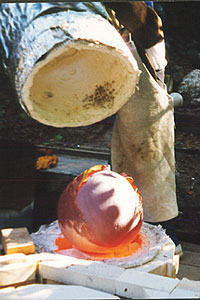
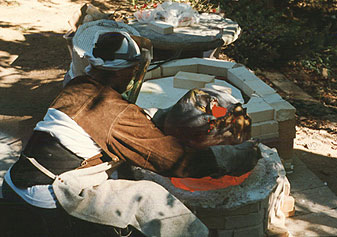
Because of
the size and shape of my pieces,
wearing protective gear, I do take most spheres
out of the kiln by hand.
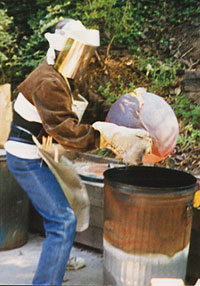
They are
immediately placed into a metal
container partly filled with combustible
material such as leaves or sawdust.
The hot
piece ignites the material and the
container is quickly covered with a lid to
prevent air from entering and smoke from
exiting. As the flames inside become deprived
of oxygen, a post-firing reduction takes place
which turns the exposed clay surfaces
black and copper bearing glazes
into voluptuous patinas.
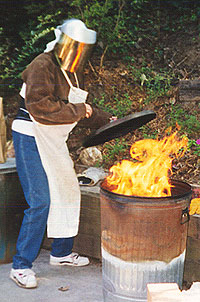
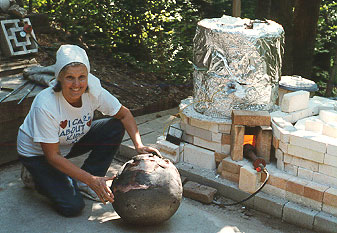
Over time, exposed to
the elements these colors
might change. The crackle producing thermal shock
is often enhanced by cooling the hot ware in
water.
Cracks are sometimes
part of the process and do not
diminish the value of a piece, on the contrary, they are
often cherished.
Raku ware is not suited for utilitarian purposes.